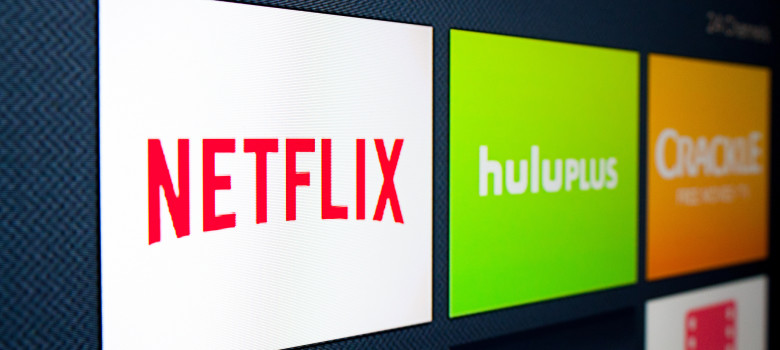Canada’s cultural industries greeted the election of a new Liberal government with considerable excitement, hoping to the turn the page on a decade of Conservative policies that were widely viewed as prioritizing consumers over creators. The Liberal platform was silent on major regulatory changes, but it did promise to reverse cuts to the CBC and to increase allocations to the Canada Council for the Arts, Telefilm, and the National Film Board.
The cultural sector will undoubtedly welcome the infusion of millions more in taxpayer support, but the bigger fight will be over legal reforms to treat telecom and Internet companies as cultural businesses and require them to make Canadian content contributions similar to those paid by conventional broadcasters.
My weekly technology law column (homepage version) notes that the prospect of telecom and Internet provider payments has been part of a long-standing campaign from cultural groups who fear that a shrinking broadcast sector will ultimately mean smaller handouts for Canadian content creation. The campaign has thus far failed to bear much fruit: the Supreme Court of Canada ruled in 2012 that Internet providers were not subject to the Broadcasting Act and last year the Conservatives led the charge against a “Netflix tax” that would have required the popular online video service to make Canadian content contributions.
While the “Netflix tax” issue is supposedly dead – all political parties indicated early during the election campaign that they did not support such a tax – many are still hoping to find new sources of private sector funding and the telecom and Internet industries offer the juiciest target.
Indeed, the prospect of new revenue sources is often what lies behind calls for a re-examination of the governing statutes, criticism that the Canadian Radio-television and Telecommunications Commission (CRTC) has abandoned sound policy in favour of popularity, suggestions that Industry Canada and Canadian Heritage merge on communications policy, or claims that telecom and Internet companies be treated as “cultural distributors” who should be required to pay their fair share.
This back to the future approach may sound reassuring to an industry that relied for years on legislative protections and mandated payments, yet it reflects a bygone era of regulation designed for a world of scarcity where broadcast spectrum and consumer choice was limited. This led to a highly regulated environment that used various policy levers to shelter the Canadian market from external competition, limited new entrants, and imposed a long list of content requirements and advertising restrictions.
As a result, a dizzying array of regulations kept the entry of new competitors to a minimum, enshrined genre protection so that Canadians were treated to domestic versions of popular foreign channels such as HBO and ESPN, and firmly supported simultaneous substitution, a policy that allows Canadian broadcasters to simulcast U.S. programming but substitute their own advertising. The Canadian cultural sector supported the system in return for steady payments to support new productions along with guarantees that a small slice of the broadcast schedule would be reserved for Canadian content.
The Internet forever changed the rules of the game, creating a world of abundance that ushered in new competitors and unlimited consumer choice. Recent CRTC data confirms what is increasingly obvious to anyone familiar with the viewing habits of teenagers and younger adults: 58 per cent of anglophone Canadians between the ages of 18 and 34 now subscribe to Netflix, which helps explain why conventional television viewership is declining among younger Canadians.
Recognizing that its relevance was at risk, the CRTC took steps last year to shift toward this new world, focusing on maximizing consumer choice, preserving net neutrality, and giving Canadian creators the tools to succeed in a global market.
The change in government has opened the door to new speculation that a renewed focus on cultural support might also mean a re-examination of CRTC policy and government telecom regulation. The Liberals smartly avoided promises to undo the shift in cultural policy, perhaps recognizing that the CRTC reforms were right not because they were popular. They were popular because they were right.









The real issue facing broadcasters and cable casters in Canada is that there are really only three in the country: CBC, Bell and Rogers. For all practical purposes, programming from Bell and Rogers is interchangeable; oh, the names of the shows are different and the channels call themselves different things but what they offer viewers in the same basic pap.
No wonder so many people subscribe to Netflix. Not only does a viewer get to choose what they want to watch, the programming is as unique as a viewer wants to make it.
I don’t have cable service but other than Modern Family and some things on TVO and PBS, I can’t think of what I am missing. Once Bell and Rogers wake up to this reality (and, no, I don’t mean more “reality” shows) and do something about it, they might find themselves with more subscribers, not fewer.
While it may have been widely widely viewed that the conservatives “prioritizing consumers over creators”, I’d suggest that is a misconception, or perhaps one specific to to a particular group of commentators. From out here in nerd-land, I see one pro-consumer initiative, the bill containing “notice and notice” and numerous pro-vendor decisions, starting with a bill that rewards dead authors for their work…
Our entire system has always been flawed. Up until now though, it has worked (for the broadcasters). The viewers have been spoon-fed the drivel that has been dished out and all at exorbitant prices. What choice was there other than to pay for a few bits of “entertainment” peppered among the raft of advertising? Oh, and through our government, which gets it’s money from you and I, we payed some more to create much of this content and ensure that we did not get access to “alien” content. Oh, the golden age for these broadcasters.
But then, someone invented digital content and they are now facing extinction and have two choices. Either they change and adapt, in effect evolve, or deny it and throw money, (and take more of our money) and prolong the death throes. I somehow think they’ll choose choice number two. Why? Because they still don’t get what is wrong with their “system”. Personally, I don’t give two hoots about Canadian content. I watch what I want and if it’s “Canadian”, so be it and if not, so be it too. But having to pay to help create it irks me. That’s what’s wrong with this country, too much sucking off the public’s teat to do business. If you want to make a show, open a restaurant, build a factory, well, raise your own funds. But no, the government always finds a way to take money from my pocket to help out these poor people. And I get stuck with junk on my airwaves to boot. Well, times are changing and we’ll see if these providers will keep up. I doubt it and good riddance. You’ve hosed us too much for too long and your comeuppance is nigh.
Pingback: Canadian Media Concentration Research Project » Canadian Media Concentration Research Project